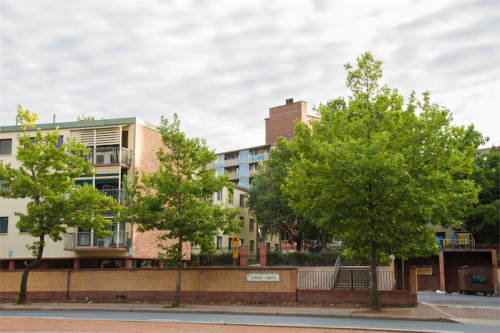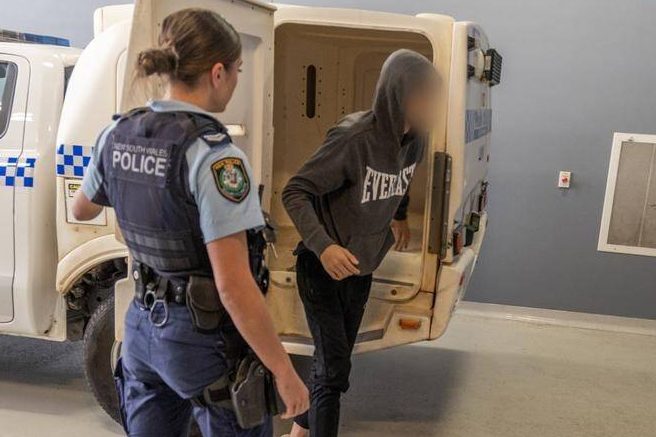
I RECENTLY took a stroll along Cooyong Street, Braddon, past the old Allawah and Bega flats. I wondered how the hell anyone could live there today.
My mind flashed back to 1968 when I moved into Allawah with my first wife and a two-year-old daughter – and a second daughter not far off. It was comfortable, clean and convenient – and far more affordable than the private rentals we’d been living in. Not quite in the same league as the towering, neighbouring Currong Apartments, of course.
I was a rookie announcer at 2CA, then situated just a hop, skip and a jump away at 64 Northbourne Avenue – or a pronounced stagger if the midnight-to-dawn announcer failed to show up for work. Of course, it wasn’t called Public Housing in those days; it was government housing.
While Currong is now vacant and awaiting demolition, Allawah and Bega remain partly occupied.
The remaining tenants, along with about 1500 of their counterparts in other public housing precincts, are about to be relocated across Canberra, with existing public housing complexes destined for private sale and the wrecking ball. Alternative sites have been identified across the ACT, notably in Nicholls, Gungahlin and out to Tuggeranong.
Notwithstanding my fond memories, looking at the unmitigated eyesore that is now called Allawah Court (a somewhat generous elevation from “Flats”), that time is well overdue.

For the Public Housing Renewal Taskforce, the next three years are going to be busy with the relocations, demolitions and eventual sales. Many of those relocations are earmarked for this year. The entire exercise must be completed by 2019, with money raised from sales going towards the funding of the controversial light rail link from Civic to Gungahlin. Currong and Allawah have already set the pace, going under the hammer recently for $47 million, with SHL Development the successful bidder.
According to Taskforce director David Collett there have only been pockets of resistance from tenants, with most of the concern being from people worried about being too far away from the surroundings they’ve lived in for many years.
“Housing is a sensitive issue. With tenants we are relocating, it’s a big change. We offer them support, both physical and concrete, as well as support in terms of the government and non-government services they are accessing. We want to make sure they’re not moving into an area where they can’t access those services they’ve had historically,” he said.
Undoubtedly, the biggest sale and redevelopment project is the iconic eight-storey Currong Apartments block in Braddon. Bundled with Allawah and Bega, it represents a vast tract of prime land destined to see a mixture of non-retail space, community facilities and housing accommodation.
It’s a massive demolition exercise, delayed somewhat because of asbestos.
“That’s one of the challenges, and the time it’s taking to move from a vacated building to a demolished building is because the contractors need to do fairly extensive testing in order to define where all those issues are,” said Mr Collett.
Many former Currong residents have precious memories of their time in the once-fashionable – and eagerly sought after – apartment complex.
Madeline Fleming came to Canberra in 1953 at the age of 18, living first at the long-demolished Mulwala House before upgrading across town to Barton House.
Then she was allocated an apartment at Currong, where she stayed for 10 years, during which time she married and had her first child before the young family moved to Woden Valley in 1970.
“Currong was magic. You went from having a little bar heater (at Mulwala), cold water in the basin, to wonderful flats, centrally heated and the biggest bathtub I’d seen in my life,” she said.
“(At Mulwala) the walls were so thin. It was cold. The manager was very strict. At 11 o’clock every night he was outside the windows making sure there was no-one in your room. I had an awful habit of emptying the teapot out the window.
“It’s very sad to see this (demolition) happening to Currong. Had they maintained it properly, it would still be a great place to live.
“I used to love that place. I get a little bit sad.”
While Madeline’s happy memories of Currong are similar to mine of Allawah, we both agree that progress must happen and we know that whatever goes into that complex in the near future, can only be for a better good.
Vale Allawah and Currong. You served the city well, but perhaps for a little too long!
Rod Henshaw is a Canberra-based journalist and broadcaster, who can regularly be heard on 2CC.
Who can be trusted?
In a world of spin and confusion, there’s never been a more important time to support independent journalism in Canberra.
If you trust our work online and want to enforce the power of independent voices, I invite you to make a small contribution.
Every dollar of support is invested back into our journalism to help keep citynews.com.au strong and free.
Thank you,
Ian Meikle, editor




Leave a Reply